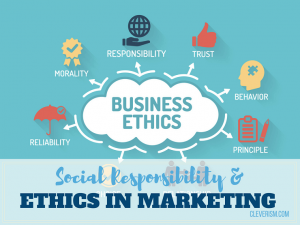By Dez Duran-Lamanilao
While ethics is a sensitive issue that requires careful consideration, every business is somewhat expected to follow ethical standards in every aspect of their organization’s activities. In social media marketing, ethics may mean different things and encompasses a unique perspective of how businesses should integrate moral values and rules into their marketing initiatives. As the public increasingly matures in their opinions and more big data technologies are incorporated into social media marketing, companies are finding ways to motivate their audience without sacrificing ethical standards.

Here are some basic ethical rules (and tips) to guide you and to help you avoid legal implications that are likely to happen in this era where almost everyone has access to the digital world:
- Know your audience. This will provide opportunities to segment your audience and drive engagement while following basic ethical rules.
- Do not mislead your market. This is one of the most common problems marketers face in relaying to their audience what their product or service can do. As there is a chance of your campaign being misinterpreted, sticking to the facts is always the ideal solution.
- Protect the privacy of your consumers. Market research has become an important part of a brand’s strategies in reaching out to its target audience. Maintaining confidentiality while doing surveys guarantees your consumers’ privacy as well as the avoidance of legal issues in the future.
- Be careful in using client testimonials and take advantage of them. Companies would rather use the exact words of satisfied clients, so the public can take it at face value.
- Be original. There have been cases where companies sue their competitors for using their materials.
- Follow government-mandated disclaimers.
- Embrace transparency. An article in Adweek reveals how clothing brands are adopting transparency to meet their customer demands and achieve sustainability.
An organization faces a lot of challenges in coping up with the demands of their customers, suppliers, partners, investors and even competitors. While it is natural to implement strategic activities to deal with these demands, drawing a line between right and wrong may be one of the best decisions you’ll ever make as a marketer.
